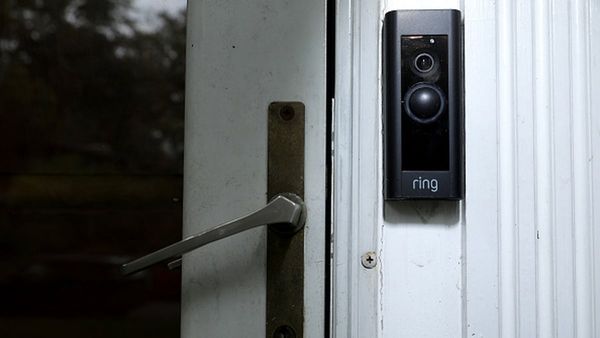
Shortly after news broke that a shooter had breached the New York City skyscraper where the NFL is headquartered and killed four people before turning the gun on himself, Chris Nowinski was called to duty.
A former Harvard football player and professional wrestler turned neuroscientist, Nowinski helped establish the Unite Brain Bank at Boston University. It is the world’s largest repository of brain samples dedicated to the study of CTE – or chronic traumatic encephalopathy, a progressive neurodegenerative disease linked to repetitive hits to the head and concussions. Some 1,600 brains have been examined there, with Nowinski helping to facilitate donations.
In his suicide note, 27-year-old Shane Tamura of Las Vegas asked for his brain to be studied for CTE, which can only be diagnosed posthumously. Tamura was a former high school football player, and he claimed the sport gave him the incurable brain injury.
Nowinski is following the case closely, preparing for the possibility that BU might acquire Tamura’s brain. While he and the general public awaits the results of the New York medical examiners office’s criminal autopsy (the office declined to provide a timeline), he spoke with the Guardian about how the Brain Bank procures former athletes’ brains and what the NFL did to make the uproar around CTE go away.
What was your initial reaction to the news?
It was very troubling to learn about his suicide note. He clearly understood some aspects of the concussion and CTE discussion. But with what he did, he was not of sound mind, so you wonder if this was something that he latched on to as part of his psychosis.
How would you categorize Tamura’s case? At least from a violence standpoint, it feels like it belongs on the same spectrum with Phillip Adams and Aaron Hernandez – both former NFL players who committed murder before killing themselves.
We’ve seen this enough over the years to know there are three categories: there’s a chance that there’s no pathological brain damage, that this has nothing to do with any history of playing football. There’s a chance this has nothing to do with CTE, but he did take enough hits that he suffered concussions or subclinical traumatic brain injury that contributed to his symptoms, and that those symptoms contributed to his actions. And then there’s the chance that he had CTE – and then that sort of splits into, did he have enough CTE where we might think it contributed to his actions or not?
You helped establish the Unite Brain Bank at Boston University, where the bulk of CTE research is conducted. What does the process of pursuing a brain for science look like?
We don’t usually go into specifics, but what I can tell you is that my job is to track down cases that are of public interest – and this case certainly qualifies.
In a case like this where there’s an ongoing investigation, the brain is basically under the jurisdiction of the medical examiner. It’s their call whether or not it’s studied and whether it’s studied in-house or externally. But I also know the people involved with the New York City medical examiner’s office have a tremendous reputation and tremendous capabilities internally, so there’s no concern that [Tamura’s] brain won’t be studied.
What happens to the deceased after a criminal investigation has concluded? Like in the case of Hernandez, who died in penal custody?
There is a time when the investigation is over that, in theory, the brain tissue then becomes property of the family.
How does one go about convincing a family to make a donation to the Brain Bank, especially in tragic situations such as Tamura’s or Hernandez’s?
At this stage, after 1,600 brains, one thing our team all agrees upon is that there’s no case so important [as] to upset a family. If they’re not comfortable or on the fence, they’re never pressured. We offer it as an opportunity if they want to.
What can the process of donating a brain look like for most families?
Most will call the 24-hour Boston University CTE center hotline. The person who responds to the call usually has a network of medical experts across the country who are essentially on call for brain retrievals. They coordinate when the brain retrieval will occur – could be at a hospital or a funeral home. The expert procures the brain and then either a courier is hired to fly it to Boston or it will be [preserved] for weeks to harden and then transferred to Boston.
BU says online that it’s able to make extractions while also allowing for families to have open-casket funerals. How?
The person retrieving the brain goes through the back of the skull.
Ten years ago, football’s CTE crisis was headline news and an inescapable controversy for the NFL. Why did the outrage recede?
I’ll give you three insights: one is that when the NFL stopped denying the game caused CTE, it took some of the energy out. It stopped there being a clear bad guy in the story. Two is the sports industry has benefited from the fracturing of media. There just aren’t that many full-time investigative journalists in sports anymore. Then point three is you can’t get this issue on television anymore, and that’s primarily because the NFL has now given a game to every media platform. It’s not even a well-kept secret that anybody who carries game broadcasts is very concerned about [not calling attention to] CTE in the NFL. [Days after this interview, the NFL announced it had bought a 10% stake in ESPN.]
I can remember there being some urgency to establish a link between CTE and violence – but all the research at the time was inconclusive. Has anything changed?
I still wouldn’t say there’s been a definitive study. Frankly, it’s very difficult to answer the question of CTE and violence through Brain Bank studies, because the data it produces comes from talking to families [after the subject dies]. It is true that a larger proportion of men with CTE than you would like had become violent with loved ones. But it’s difficult to study the appearance and disappearance of the violence in part because a lot of people with CTE became violent midlife and then less so as dementia set in. So that will need to be studied longitudinally.
But if you ask me: am I aware of people [who played contact sports] who are considered the nicest guys in the world suddenly in their 50s and 60s becoming violent with their loved ones? I have a lot of those stories.
The NFL is quite proud of the rules changes they have enacted to make pro football safer – and to its credit the updates have taken a lot of hits out of the game. But what about the levels below, like college and high school? Can we point to a reduction in potential brain injuries?
Firstly, the NFL had to take the brain injury risk seriously because there’s a [players] union. But that doesn’t exist in college. We did an editorial recently to accompany a study that showed basically that 80% of the NFL’s concussions are in games; in college, it’s 30% [meaning the overwhelming majority happen during practice]. The editorial laid out how the NFL set the tone 10 years ago by virtually eliminating hits in practice.
The reality is I’m glad the NFL has started making some stronger changes – most recently, to kickoff procedures. No one was dying for that, but now we’re all fine with it. But the sad part is the other levels aren’t copying the NFL. Like, how is the NFL proving that it’s safer, but college and high school football aren’t even talking about it? In high school, apart from two states that have severe limits, everybody else has pretty loose limits, no monitoring and no penalties. I’m having that battle on a daily basis to warn athletes, especially the ones who are old enough to understand, that they’re not being warned and their coaches are not properly educated on CTE.
So for all the good things that have happened, slowly progressing the discussion, we should not expect CTE to go down. We’re still creating the same problem; we just feel better about it.
Personally, it always rankles me to hear announcers complain about roughness penalties that strike them as overzealous.
Then you realize safety is an afterthought to the business – that if the changes are too radical and fans turn off the TV, the hitting comes back. And I don’t have a problem with that at the NFL level. Players get half the revenue, so they can have that discussion about how safe they want it to be. But we also have to educate the fans to allow it to be safer. The one place where that’s actually happened is professional wrestling. Now that fans understand the risks, they want matches to be stopped when people have concussions.
Even now you see wrestling fans struggle to play back old matches because it’s so obvious how dazed some of those guys were in the ring.
I had that discussion with a 25-year-old who works for a sports organization in the brain health space who was like, “I watched some matches from your era. What the hell were you guys doing?” So, we could educate NFL fans too to enjoy a slightly safer game. But who wants to be reminded that many of the guys they’re watching already have CTE?
Given that the NYC shooting happened during NFL training camps, I was surprised that players didn’t have more to say about it.
Current NFL players don’t talk about CTE because many of them don’t understand it and others know they’ll be punished if they do. I mean, let’s be honest: Jerry Jones [owner of the Dallas Cowboys] is still on the record saying he doesn’t believe that football causes CTE even though he’s lost a teammate from Arkansas to it. So if you play for the Cowboys and start talking about CTE, I wouldn’t be surprised if he cut you the next day.
Ten years ago there was a lot of talk about the need for a test to detect CTE in the living. Are we any closer to that?
Yes. We’ve learned tau Pet scans for Alzheimer’s disease don’t work. But we have identified targets we think might make it diagnosable from blood, and we are trying two more new tau Pet tracers that people are hopeful might work for CTE.
Interview has been edited and condensed for clarity.







